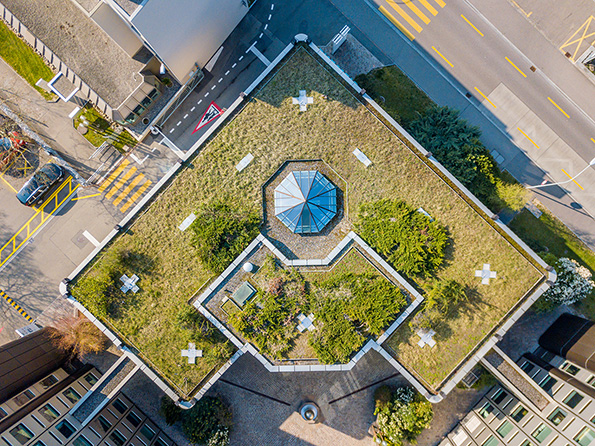Current testing facilities
At present, the necessary general conditions are being created so that green areas can be tested in a realistic set-up and on an appropriate scale. Among other things, the researchers are installing sensors that enable water retention and run-off to be recorded on a time-dependent basis. In the near future, it will be possible to conduct tests on four test areas so that different systems can be compared against each other, for example.
Simulation tools
Once material parameters have been determined in the laboratory, hygrothermal simulations can then be used to transfer findings to any climatic conditions. This enables roofing structures to be optimized and also urban building physics studies to be conducted in order to evaluate the impact of green roofs on the urban climate.
As a result, the hygrothermal design, dimensioning and optimization of green roofing structures according to EN 15026 / DIN 4108 / ÖN 8110 (durability of the entire construction) can already be carried out today.
Click here for more information.
Cooperation
We are currently looking for partner companies interested in having the rainwater retention capacity of their green roofing structures assessed within the scope of pilot projects.
Are you interested in a cooperation? We are looking forward to hearing from you!
